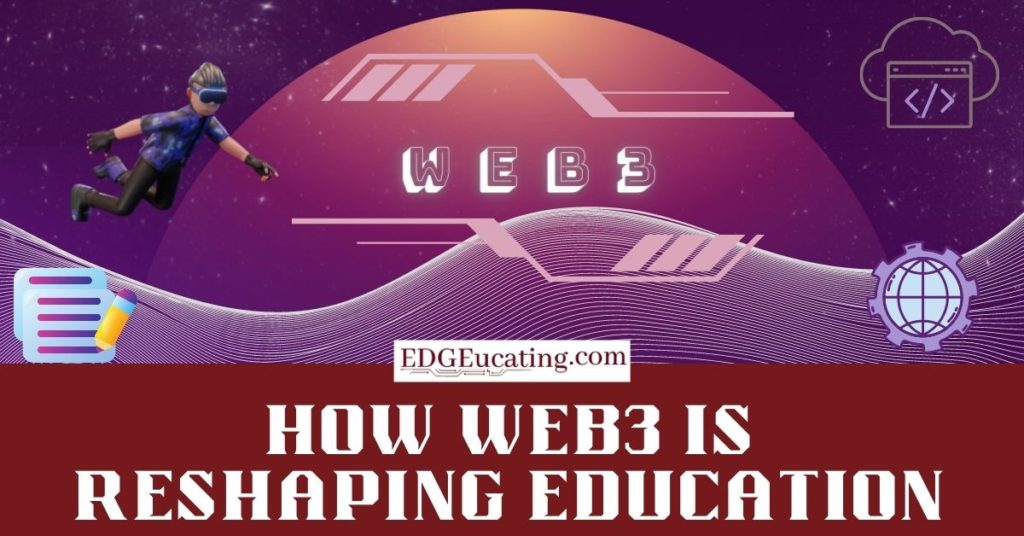Last year, I explored how blockchain was starting to influence learning, and today that conversation has grown into something even bigger: Web3. This new stage of the internet is not just changing finance and entertainment—it’s reshaping how we think about education and its role in preparing students for the future.
Education’s evolution can be seen in three distinct stages:
- Ed1 was knowledge transfer provided by accredited institutions, such as universities and high schools.
- Ed2 was a centralized platform distributing education, such as Udemy, Skillshare, and Outschool.
- Ed3 is individuals gathering skills from a variety of sources and validating that knowledge in their own wallet.
For educators, Ed3 represents a shift toward learner ownership, where students can build and prove their knowledge on decentralized platforms. More importantly, it connects education directly with the needs of modern industries, giving students the 21st century skills and real-world connections they’ll need to thrive in a rapidly changing economy.
How will this impact education?
Economic forces, government, and web2 have given large entities the chance to gain power and control over how our information is used. Web3 enables individual users to make decisions about their online activity without having to compromise on the utility aspects. It has the power to dismantle the problematic systems that have stagnated systems such as education.
Based on my previous research and Forbes, “In web 3, students—not institutions—own their own achievements and credits in this digital wallet. It captures who they are, how they learn best, what interests them, and how their health and home lives impact learning. These digital wallets stick with them from kindergarten to high school graduation and beyond. And they leverage blockchain technology for educational institutions and employers to recognize and catalog learning achievements, shifting the paradigm completely.”
As noted entrepreneur and web3/Ed3 expert Scott Meyer wrote, “Web 3 technology and ethos provide new possibilities for education to become more accessible, affordable and transparently accredited. Innovative education models are now being built that can provide inspiration and blueprints to truly embrace a shift to Ed3.”
Why Does Education Need to Embrace This Change?
The emergence of web3 means new possibilities for education. To realize this potential, we need to answer a foundational question: What is the purpose of education?
Education has long been the provider of skills training, research, personal exploration, social networks, a place to grow up, sports, camaraderie, a verifiable credential, and more. This was known as Ed1 where these elements came together and created some of the finest and most impactful institutions in the world, but it left a lot of people out.
Skills training is often what students and parents think of when they imagine education, both in secondary school and in higher education. But education in the Web3 era is about more than employability—it’s about preparing students with adaptable 21st century skills that provide a stronger real-world connection between what is taught in classrooms and the skills needed in rapidly changing workplaces. The question of “is education worth it” or “is the school good” centers on the idea of learning skills that will guarantee a career or placement at a university. Some institutions, like tech schools or polytechnic universities, explicitly focus on this aspect of education. Non-traditional learning, such as technology boot camps, have also emerged to provide these skills. For research universities or liberal arts schools, though, this training is less of a focus.
These prior versions of education have been restricted by physical location, money, and dependency on institutions and government. Due to these restrictions, many have lacked the ability to access all aspects of what education has to offer. This meant that the playing field wasn’t always level.

What Does Web3 Look Like in Education?
According to ASU President Michael Crow, we’re currently experiencing Realm 4 of the 5 Realms of Learning, where strategies like AR, intelligent tutoring, and game-based learning can unlock students from their geographic locations. In Realm 4, students always have access to the world regardless of their physical location or school budget restrictions because experiences happen virtually.
We see this with technologies such as Merge, Kai’s Clan, and Umety. Students are no longer limited in their experiences; instead, they gain a real-world connection to science, history, and global collaboration that extends far beyond textbooks. These platforms, and others like them, offer students the ability to travel anywhere in the world or even to another planet while making connections to industry in education.
In addition to the expansion of AR and VR with Ed3, we are also going to see both students and teachers owning their learning and teaching. The power will be placed in the hands of those seeking education and those providing education. We are already seeing this with teaching platforms such as LearnDash, Udemy, and Outschool. Educators are creating their content on their own sites and selling it directly to students. This gives the educator complete control over their teaching and their income.
Additionally, we have already seen the shift towards students obtaining control of their records using blockchain. Massachusetts Institute of Technology (MIT) partnered with Learning Machines, a Cambridge, Massachusetts-based software development company in 2017. MIT was the first to issue diplomas to students on their smartphones via an app. The app is called Blockcerts Wallet, and it enables students to quickly and easily get a verifiable, tamper-proof version of their diploma that they can share with employers, schools, family, and friends. This form of diploma delivery is groundbreaking because it gives students autonomy over their own records. No more requesting records and hoping the people involved get them where they need to go for that new job or college application!
What Web3 Means to the Future Workforce?
Today, workforce development is in high demand due to tectonic shifts in demographics and technology. Technology is speeding the pace of change, so more training is needed both for existing workers and those entering the economy. By the time students have completed a four-year degree, the skills they have learned are often already out of date. The shift to Ed3 will change the way learners get access to the necessary skills and how these same learners keep records of their training. It also strengthens the link between industry in education, ensuring that what students learn directly aligns with the evolving demands of the job market. These new systems will enable the pace of learning to closer match the skills needed by the current workforce.
In Summary, Web3 is More Equitable Education.
Just as Web2 reshaped communication and access to information, Web3 is set to redefine learning itself. By shifting control from institutions to individuals, it creates opportunities for more equitable access while ensuring that students graduate with the agility, creativity, and 21st century skills needed in a global economy.
For educators, embracing this change isn’t optional—it’s essential. Web3 allows us to build real-world connections between the classroom and the workplace, bridging the gap between theory and practice. It also ensures that industry in education has a voice in preparing students for what’s next. If we lean into this transformation, we’ll not only keep pace with technology but also equip our students to thrive in whatever future lies ahead.


